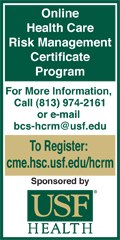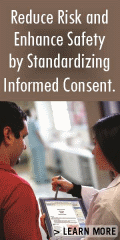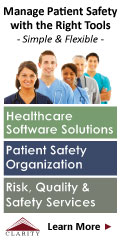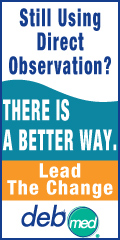 |
 |
 |

March / April 2005

Disease Management
Defining Patient Safety

By Amy Bussian Bennett, JD, MBA
The Disease Management Association of America (DMAA) is a nonprofit, voluntary membership organization, founded to represent all stakeholders in the disease management (DM) community. Among the missions of the DMAA is advancing disease management through the standardization of definitions, program components, and outcome measures.
In 2004, the DMAA published a Dictionary of Disease Management Terminology (The Dictionary). The Dictionary grew out of the work of the Definitions Workgroup of the Quality and Research Committee, the Patient Safety Committee, the Patient Satisfaction Committee, and the Predictive Modeling Committee. DMAA's Quality and Research Committee began a project in 2003 to accumulate unpublished DM outcomes data, but it soon became apparent that a lack of consistent definitions inhibited the project. The Dictionary was conceived with the objective of at least precipitating debate in the industry over the definition of its commonly used terminology, if not also standardizing DM definitions.
The Dictionary grew to be a handbook with three sections:
- Definitions of 126 DM terms, including patient safety.

- Extended definitions of about 45 frequently used DM terms (including patient safety).

- An "At a Glance" listing of DM terms, which compares DMAA's definitions to the definitions of other organizations such as the National Council on Quality Assessment (NCQA), Joint Commission on Accreditation of Healthcare Organizations (JCAHO), URAC and the Centers for Medicare and Medicaid Services (CMS).
DMAA anticipates that The Dictionary will promote a healthy debate and expects to publish a second and expanded editions in the future.
DMAA's Patient Safety Definition
DMAA has defined patient safety as " ... the prevention of harm to patients. Patient safety efforts aim to reduce errors of commission or omission." Patient safety, according to the Institute of Medicine (IOM), is the prevention of harm to patients and can be addressed at multiple levels. Most patient safety efforts to date have focused on inpatient care.
Disease management, by its very nature, contributes to patient safety outside of the hospital setting. DM's basis of evidence-based medicine addresses both errors of commission and omission and empowers the patient in self-care efficacy. DM programs incorporate tools and systems to prevent avoidable hospitalization, excessive outpatient utilization, and to prevent or delay long-term care placement. Multidisciplinary DM programs also contribute to the prevention of further functional deficits and other adverse events among those with chronic illnesses. Education and support to patients and caregivers improves the effectiveness and efficiency of the patient's care management.
Disease management can be used to address patient safety by implementation of tools, including:
- Patient-specific information. The collection of information to support identification of quality of care and patient safety issues is a key component of DM. This data can be aggregated with other available information such as claims data. Data mining and predictive risk modeling provide precision aggregate data to focus performance improvement efforts to improve disease-specific population safety.

- Patient-centered approaches that improve access and timeliness of interdisciplinary care.

- DM programs that empower the patient to maximize self-care efforts and improve the safety of their home environment.

- Evidence-based therapy that reduces the "quality chasm" and improves access to and timely initiation of (1) the most effective interdisciplinary care management, (2) drug therapy, and (3) appropriate clinical screening/testing.

- Innovative use of new technology, risk modeling methodology, and interdisciplinary collaboration to provide timely, proactive interventions that improve care continuity and coordination.
Disease management programs incorporate systems and technology through data mining and routine claims analyses both at the aggregate and patient-specific level. DM has been visionary in medical safety, having put electronic medical drug utilization review and evidence-based clinician cueing systems in place. DM providers have laid the groundwork for the next generation of medical safety with patient partnering at the center of the strategy across the continuum of care. The DM community is therefore ready to partner with all providers including acute care providers, community-based physicians, and the entire interdisciplinary team to improve patient safety and DM outcomes.
Amy Bennett is vice president of CLB Health and a member of the Disease Management Association of America Patient Safety Workgroup.

|
 |
 |
 |


















|
 |

